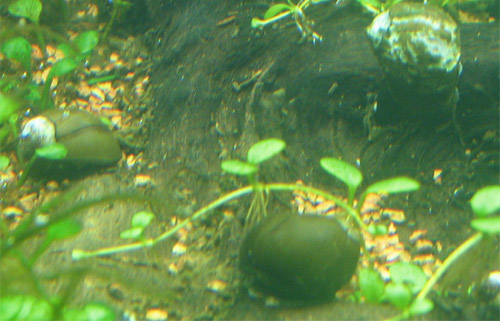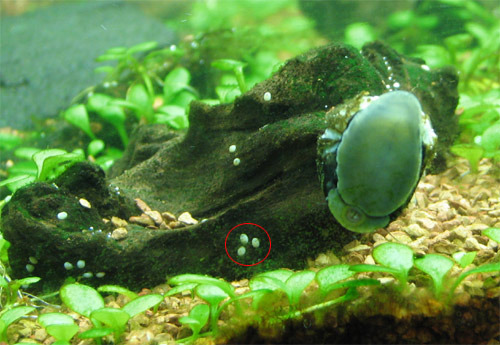For those of you like me, who haven’t heard the news, there is an exciting new group of shrimp coming into the hobby from Sulawesi, Indonesia. The shrimp are freshwater, but exhibit striking similarities to some marine types of shrimp, especially in their coloration. Most have yet to be fully identified, so they could go by a variety of names.

Caridina sp. “Orangedelight”
The Sulawesi region contains two ancient lakes, Lake Poso and the five-lake Malili system. These old lakes have allowed the species within them to evolve uniquely from their counterparts in surrounding bodies of water. The lakes themselves are a little bit more alkaline than what many of the shrimp we’re used to keeping live in.

Species TBD
From wklotz:
In the Towuti, Mantoano and Poso lakes you can find pH values between 7,4 and 8,2; appear to require the higher pH. the conductivity is at about 224 µS and the total hardness at about 6°DH.
The water temperature is rather stable at about 26,5°C. (80°F) Only in shallow water regions near the shore the temperature can rise to 29°C. (84°F) The Malili system lakes have relatively normal water parameters, with soft water and pH slight alkaline.

Species TBD
There are some problems, however with these shrimp. For starters, many of them have an adult size of 1cm, which would make them unsuitable additions to most people’s fish tanks. Additionally, while they have been kept successfully in captivity, they’re usually kept at a pH greater than 8.0 with no CO2 added, which is problematic for many planted tanks.

Species TBD
Finally, at least one of the species, Caridina spongicola, may not survive due to a possible interdependence with a freshwater sponge. It’s still unclear whether this is a firm requirement, but in the wild, C. spongicola appears to have descended from rock-dwelling shrimp that now use sponges for shelter, and their collected diatoms for food.

Caridina spongicola
That said, at least one member on the Shrimp Now thread have reported eggs forming and hatching when the adult reaches ~1cm in length. Some of the juveniles appear to be viable, so captive breeding may be a possibility.

Species TBD
Of all of the shrimp, Caridina sp. ‘cardinal’ seems to be the easiest to keep, with not surprisingly, the C. spongicola being the most delicate. Many folks report keeping multiple species in a single tank without concerns of interbreeding. It’s possible that this claim is made too early in the process to be conclusive.

Caridina sp. “Goldpowder”
It’s important that commercial shrimp farmers find a way to mass produce these shrimp, as wild collecting can not be sustainably done due to the narrow habitat in which they live.
From Kristina von Rintelen:
Imminent threats are habitat destruction due to canalization work in the outlet area for the hydroelectric dams of a large nickel mine operating in the area, and possibly aquarium trade, where Caridina is a well sought-after pet due its partially flamboyantly coloured species. The Malili lakes have recently received much interest from this side (Chris Lukhaup 2006, personal communication). Protective measures should be taken to ensure not only the existence of the two beautiful species but also to enable further research on the evolution of specialization and interspecific association in this ancient lake model system that can continue to improve our understanding of the origin of these traits.

Caridina sp. “Freshwater Cardinalshrimp”
These shrimp appear to be fairly shy shrimp, preferring dimmer light levels, and doing most of their foraging at night. The exception to that is the Caridina sp. ‘Caridina’ which people have reported as being fairly active.

Caridina sp. “Goldenbackline”
Similar to the Caridina spongicola possible dependence on sponges, some have speculated that the color of the substrate may also serve to keep different species more at home.

Caridina sp. “Sunghai Electric”
Finally, I do not recommend anyone currently buying these shrimp unless they are captive bred, or willing to breed and sell the shrimp themselves. The cost is probably a barrier for most folks anyways, as they’re currently retailing for $40-$45/shrimp from the U.S. online seller, Planet Inverts.
Information collected from the Shrimp Now forum. Also, from here. And here. Photos from www.crusta10.de. Experienced shrimp breeders can purchase some of these from Planet Inverts.
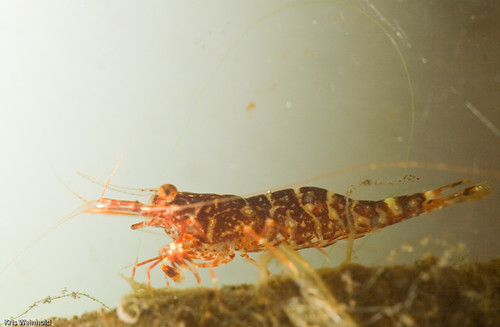
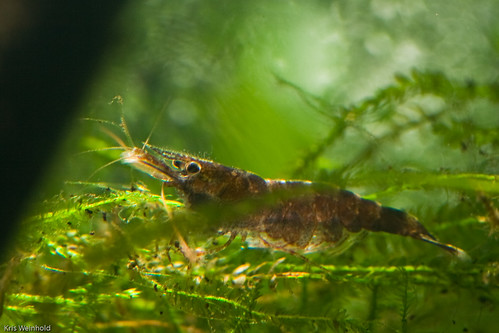













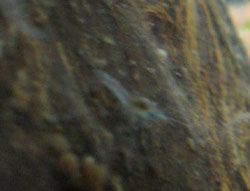
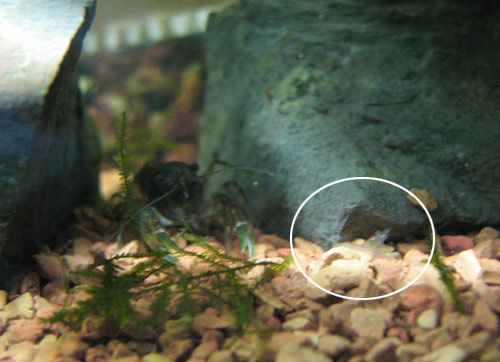
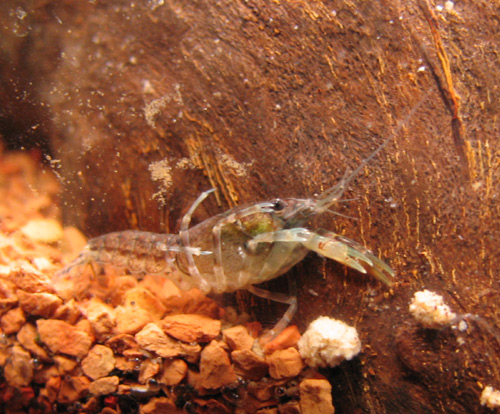
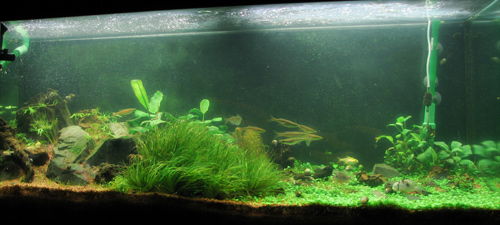
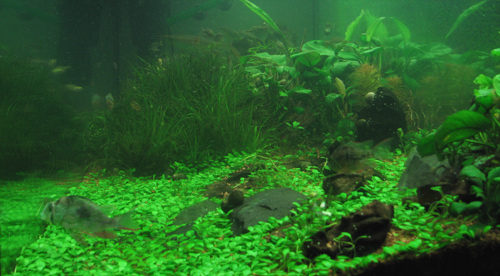

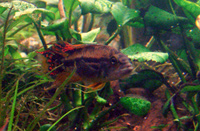 (Left – Apisto. cacatuoides, hovering over some anubias barteri, where his fry are swimming between the roots.)
(Left – Apisto. cacatuoides, hovering over some anubias barteri, where his fry are swimming between the roots.)